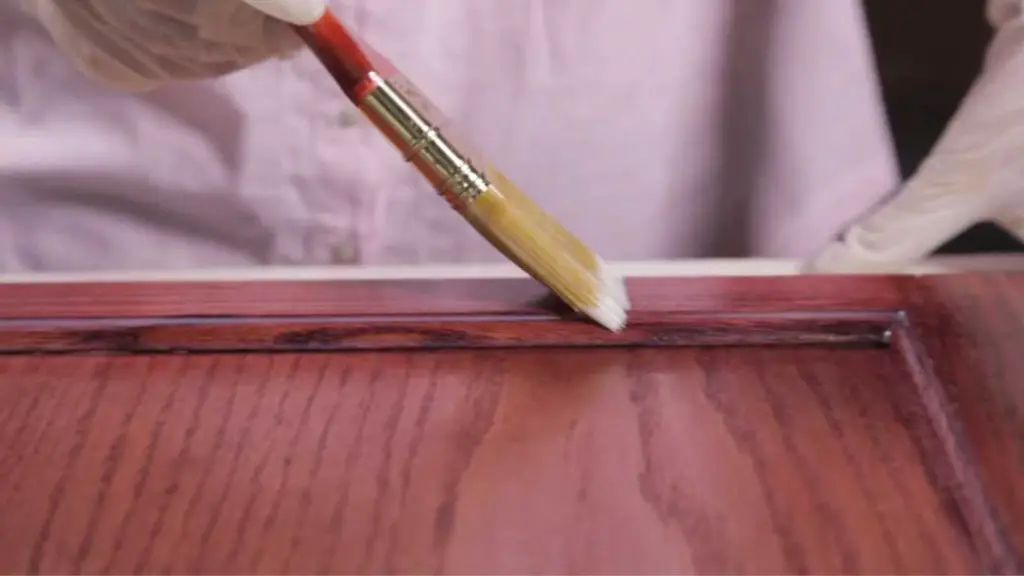Have you ever looked at a can of paint and wondered which one you should buy? If you’re planning on painting wood, you might be debating between Krylon and Rustoleum.
Both brands offer a variety of products specifically designed for painting wood, but which one should you choose? You should find a paint that will provide a smooth finish on wood surfaces that will be exposed to the elements rather than one that will protect against weathering.
To help you make your decision, we’ve put together a quick guide to Krylon vs Rustoleum for wood. Read on to learn more about the key differences between these two brands.
Krylon Vs Rust-Oleum for Wood: Key Differences
Wood is a beautiful material that can add a touch of elegance to any home. However, it also needs to be properly protected in order to keep it looking its best. When it comes to choosing a wood sealer between Krylon and Rust-Oleum, there are some key differences between them:

1. Coverage
Krylon’s website states that their spray paint can cover an area of up to 25 square feet, while Rust-Oleum’s website says that their spray paint covers 7 to 8 square feet. So, Krylon’s paint has significantly higher coverage than Rust-Oleum’s.
However, it should be noted that Rust-Oleum’s website also states that its paint is suitable for indoor and outdoor use, while Krylon’s website recommends using it for outdoor use, but you can also use it indoors.
So, if you’re looking for paint that can be used both indoors and outdoors, Rust-Oleum is the better option. But if you’re just looking for paint with high coverage, Krylon is the way to go.
2. Dry Time
The dry time is one of the most important factors when choosing a paint or primer. Krylon states that their paint will be dry to the touch in 20 to 25 minutes, while Rust-Oleum says that their product will take 15 minutes to dry to the touch and 1-2 hours to handle.
Both products are fully dry in 24 hours. Rust-Oleum does note that their primer can be top-coated immediately, while there is no mention of this with Krylon. Based on these claims, it seems that Rust-Oleum has the edge regarding dry time.
However, it is always best to test the product on a small area before applying it to a larger surface to ensure that it meets your needs.
3. Paint Type
Krylon offers a wide range of paint types, including general-purpose, aerosol, specialty, and rust-preventative. Rust-Oleum also has a variety of paints, but they focus on specialty paints like a chalkboard, appliances, and high heat.
In terms of general-purpose paints, both brands offer similar products. However, Krylon’s general-purpose paints cost slightly less than Rust-Oleum’s. When it comes to finishes, Krylon offers more options than Rust-Oleum. Krylon has mate, non-gloss, semi-gloss, and flat finishes, while Rust-Oleum only offers glossy and semi-gloss.
4. VOC Content
Deciding whether to go with Krylon or Rust-Oleum for your woodworking project may come down to understanding the VOC content in each product. VOCs, or Volatile Organic Compounds, are released into the air when the paint dries and can harm human health.
The EPA has set standards for the VOC content of paint, and Krylon complies with these standards. On the other hand, Rust-Oleum is a zero-VOC paint, meaning it does not release any harmful chemicals into the air.
So, if you’re looking for a paint that will be eco-friendly and healthy, Rust-Oleum is the way to go.
5. Color Selection
When choosing a paint for wood, there are many factors to consider. But one of the most important is color selection. After all, the right color can make or break the look of your project. So how do Krylon and Rust-Oleum stack up in terms of color selection?
Krylon has a whopping 396 different colors to choose from. That’s almost double the number of colors offered by Rust-Oleum. And with such a wide variety of colors available, it’s easy to find the perfect shade for your project.
In contrast, Rust-Oleum has a more limited selection of 190 colors. But that doesn’t mean that you won’t be able to find the right color for your project. Rust-Oleum also offers a variety of finishes, including gloss, semi-gloss, and more.
Do I Need Clear Coat After Krylon and Rust-Oleum Spray Paint Wood?
It depends on the type of paint you use and the desired final result. You probably won’t need to seal it with a clear coat if you use Krylon and Rust-Oleum high-gloss or semi-gloss paint. The paint itself will provide a shiny and sturdy finish.
However, if you use a lower-sheen paint, you may want to apply a clear coat to help protect the finish. You can choose from water-based sealers that will provide an invisible barrier against dirt, dust, and moisture.

What Is the Most Durable Paint in a Spray Can?
If you are looking for durable spray paint, you should choose Rust-Oleum. Krylon’s coatings are weaker and less durable than those offered by Rust-Oleum. This is because Rust-Oleum’s products have highly protective features that make them ideal for exterior projects. You can also check Behr spray paint vs Rust-Oleum to get even better ideas about pray paints.
For example, Rust-Oleum’s products are resistant to chipping, fading, and peeling. In addition, they are also mold and mildew-resistant. As a result, Rust-Oleum’s products will last longer and look better than its competitors’ ones.
Rust-Oleum is the best spray paint for finding a product that will provide lasting protection for your home or business.
Conclusion
At the end of the day, the best paint for wood will depend on your individual needs. Regarding general-purpose paints, Krylon’s products are slightly cheaper than Rust-Oleum’s.
Rust-Oleum offers a wide range of specialty paints, as well as zero-VOC paint, that is better for your health and the environment. Krylon also has a wider selection of colors to choose from.
While both brands offer high-quality products, the Rust-Oleum paint sprayer is the better choice if you’re looking for durable paint that will last longer and provide lasting protection.

S. Pushon is a paint expert, self-taught artist, and currently working as an adviser in the paint industry as a Quality Improvement and Development Assistant.
An artist by heart, he draws remarkable art pieces and as a professional paint industry individual, he seeks the insight and shares with enthusiasts. Read more…

